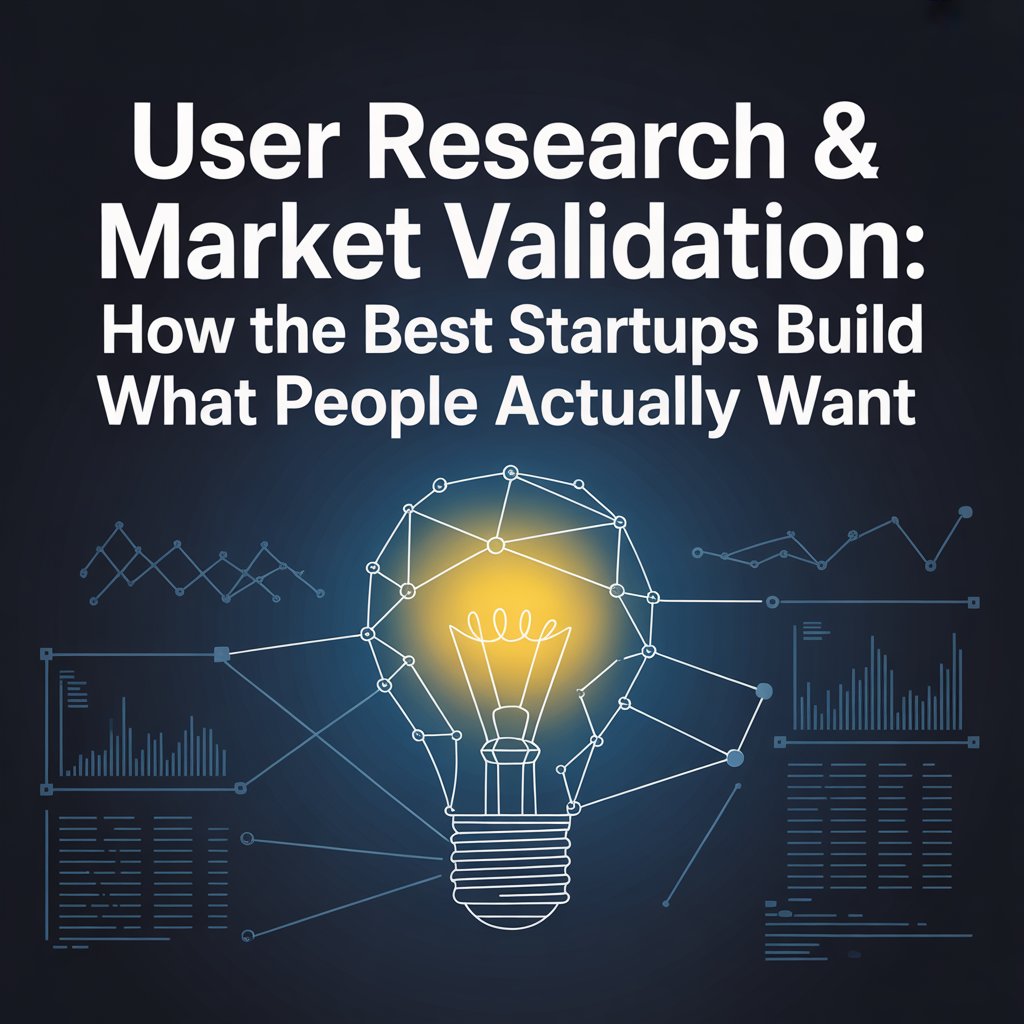The Best Startups: User Research & Market Validation for Product Success
If there’s one truth every experienced founder learns early, it’s this: Startups don’t fail because they can’t build. They fail because they build something no one wants.
It’s not a technology problem. It’s a clarity problem. That’s why user research and market validation aren’t just helpful, they’re mission critical.
1. User Research: Learning Before You Build
User research is about understanding, not convincing. It means putting your assumptions aside and sitting down with real people to hear their needs, pain points, and workarounds.
Case Study: Airbnb
Before Airbnb scaled, the founders didn’t just sit in their apartment writing code. They flew to New York and lived with their users. They asked hosts why they signed up, what scared them, and what guests complained about. These raw conversations led them to tweak their listings, add photo verification, and later roll out professional photography.
Impact: Conversions improved, user trust went up, and the experience became far more scalable.
Insight: The most important features in your product often come from the most uncomfortable user truths.
2. Market Validation: Testing If People Will Act
It’s not enough to know a problem exists. You need proof that people care enough to take action, sign up, switch, or pay. That’s market validation.
This doesn’t require a finished product. In fact, it’s better if it doesn’t. The goal is to test appetite with the minimum viable signal.
Case Study: Buffer
Before Buffer became a social media powerhouse, its founder built a simple landing page describing what the tool would do. When people clicked “Get Started”, they were told it wasn’t ready yet, but they could enter their email to stay informed.
When hundreds did, he added pricing tiers to the page to test willingness to pay. People clicked again.
Impact: Within weeks, he had validated demand and pricing, all without building the product.
Lesson: If users aren’t even willing to click, they’re not going to pay.
3. The Right Process to Follow
Step 1: Talk to Real Users
No forms. No surveys. Have honest conversations with 10–15 people in your target segment. Ask questions like:
- What’s your biggest challenge with X?
- How are you solving it now?
- What’s frustrating about that solution?
Be quiet. Listen deeply.
Case Study: Superhuman
Before launching, Superhuman conducted 100+ user interviews using a technique called “The Product/Market Fit Engine.”
They asked, “How would you feel if you could no longer use Superhuman?”
Only when 40% said “very disappointed” did they move ahead.
Impact: They tuned their product and positioning until they hit that threshold resulting in one of the most loved products in tech.
Step 2: Map the Problem Space
Once you’ve collected feedback, start pattern-matching:
- What problems came up repeatedly?
- How do people describe those problems in their own words?
- What are the emotional drivers of stress, time, money?
Case Study: Duolingo
Duolingo’s team realized that learners weren’t just looking to “learn Spanish” they were looking to feel productive in short bursts.
That insight shaped their gamified UX streaks, daily goals, rewards all optimized for dopamine, not curriculum.
Impact: Over 500 million users and a radically different way to engage with learning.
Step 3: Test the Waters
Use no-code tools to spin up a quick landing page or demo. Give a clear value proposition and a single call to action (signup, preorder, etc.). Then promote it ads, Reddit, cold emails and measure:
- Do people click?
- Do they sign up?
- Do they ask questions?
- Do they come back?
Case Study: Zappos
Before Zappos stocked a single pair of shoes, founder Nick Swinmurn went to local stores, took pictures, and posted them online.
If a customer ordered, he’d go buy the shoes himself and ship them.
Impact: He proved people would buy shoes online, a radical idea in the early 2000s.
Zappos sold to Amazon for $1.2B.
MVP doesn’t mean janky. It means just enough to test.
4. Red Flags to Avoid
- Talking to only friends or startup peers → You’ll get polite lies.
- Pitching instead of listening → You’ll miss the gold.
- Chasing everyone instead of a narrow early user → You’ll get no signal.
You’re not looking for approval. You’re looking for pain — and urgency.
5. Why This Pays Off
Once you understand your users at a core level:
- Marketing writes itself
- Product becomes obvious
- Investors take you seriously
- Your roadmap gets ruthless
Case Study: Segment
Originally a classroom tool, Segment pivoted only after user research revealed that the analytics tracking snippet inside their product was what devs actually wanted.
That pivot created one of the most successful B2B SaaS stories of the decade, leading to a $3.2B acquisition by Twilio.
Final Thoughts
User research and validation aren’t boxes to tick. They’re your startup’s compass. Every great product from Figma to Stripe to Airbnb started not with code, but with clarity.
Before you build anything else, build understanding. The best founders don’t guess what people want.They ask. They listen.
And they validate.
FAQ
User research is about deeply understanding your potential customers. Their problems, behaviors, and motivations. Market validation confirms that a significant number of these users are willing to pay for a solution.
Immediately. Before writing a single line of code or designing an interface, talk to users. The earlier you start, the more time and money you save by avoiding assumptions.
Combine qualitative interviews with quantitative signals: competitor analysis, search volume, signups for waitlists, and A/B tested landing pages. If people are actively seeking and paying for alternatives, you’re on the right track.




